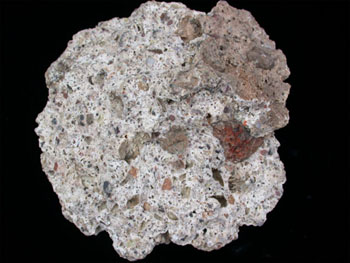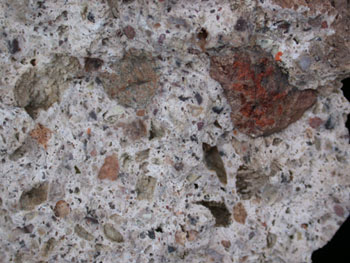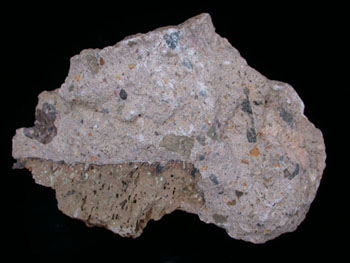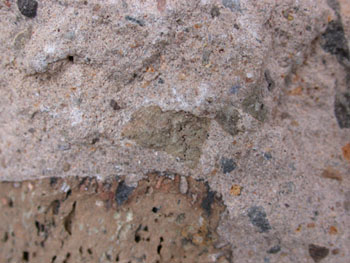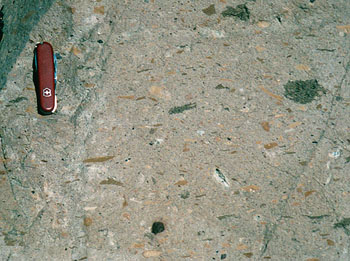Pyroclastic Textures
A pyroclastic texture shows a mixture of rock fragments, pumice, and volcanic ash. The ash is very fine grained, so only the rock fragments and pumice are identifiable. A rock with a pyroclastic texture is termed a tuff if the largest fragments are less than 2.5 inches long, a volcanic breccia if the fragments are larger.
Because tuffs and breccias require lots of ash to form, most tuffs and breccias are intermediate or felsic in composition. The samples shown below are all rhyolite (felsic) tuffs.
|
|

